June
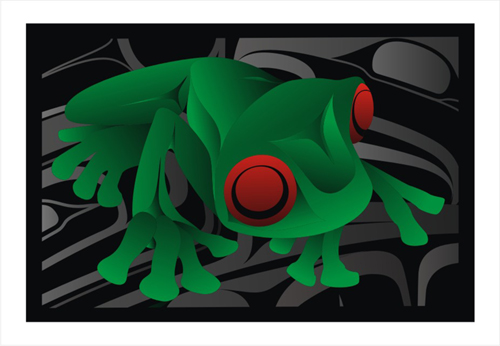 We’re welcoming summer with a celebration of our amphibian friends, frogs! The state of Washington has ten indigenous species of frog, including the bullfrog, Pacific chorus frog, Northern leopard frog, cascades frog, and Oregon spotted frog. (I guess you could say we’re hopping.)
We’re welcoming summer with a celebration of our amphibian friends, frogs! The state of Washington has ten indigenous species of frog, including the bullfrog, Pacific chorus frog, Northern leopard frog, cascades frog, and Oregon spotted frog. (I guess you could say we’re hopping.)
Amongst the indigenous peoples of the Northwest, the Frog was often a symbol of prosperity and wealth, and its penchant for singing or chirping leads to many myths about why it’s sounding off. Frog was said to have warned humans of impending danger, and indeed, we know that frogs are indicator species of an ecosystem’s overall health.
Known as an important family crest figure, the Frog or “Wukus” is the announcer who tells the end of the Winter Dance season. It’s said that when the last snowflakes of the winter touch the ground they turn into Frogs. Then the Native people know that there is only six weeks until the Salmon return to the rivers and summer begins. Coast Salish carver Charles Elliott wrote of the Frog,
“Though very small and peaceful, the frog has an important role to play in Coast Salish myths and legends even to this very day. The frog is the one in the Spring of the year who sings in March to announce the beginning of the new year. In the past, as in the present, the singing of the frogs announces the beginning of a new cycle; another yearly cycle begins. To the Coast Salish people and culture, the voice of the frogs tells us all to put aside the things of winter such as winter dancing and potlatching – to begin the new cycle of preparation for next winter’s activities. The little frog, though small, has a very important job to do in the yearly cycle equally as important as the arrival of CENTEKI, the first salmon (which is sockeye) or PEKELANEW, the moon which turns the leaves white. The frog is honored as the keeper of the sacred seasons and is often honored in our legends and stories appearing in our art works and totems, house posts etc.”
In Haida culture, the Frog is often shown on the house posts because it is believed that this helps keep the house from falling over.
In Tsimshian culture, the Frog is known as the communicator between mother earth and man. Frog is considered the only child to mother earth. The story of Volcano Woman tells of this relationship. Her only child, the Frog, saw evil men hunting her earth creatures for pleasure rather than necessity. When the men noticed Frog, they knew they would be found out so they killed him. Volcano Women erupted and destroyed the earth in her sorrow and fury. She cried great tears of lava. The earth was destroyed, but in time would be born again even stronger and more fertile.
Exhibition Dates:
June 24, 2018 - July 23, 2018Featured Works
-
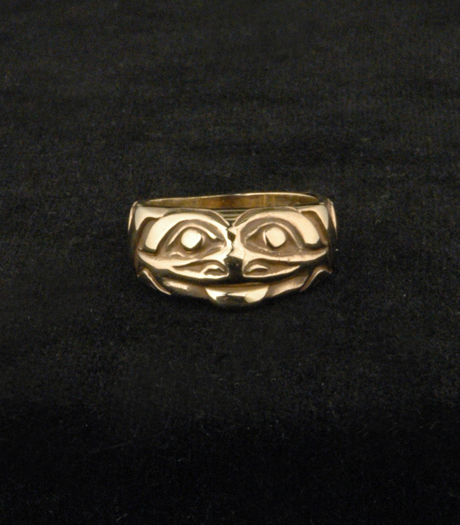 Owen and Janet WalkerFrog Ring14K Gold$1,375
Owen and Janet WalkerFrog Ring14K Gold$1,375 -
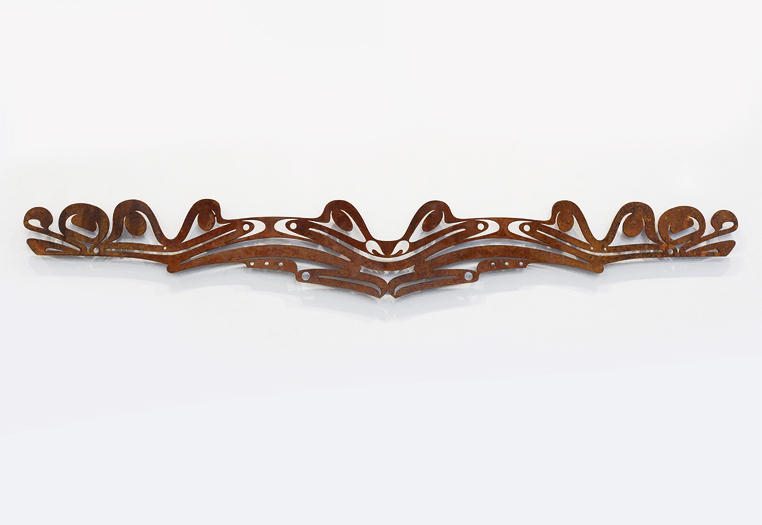 Barry HeremSeven FrogsOpen Edition Corten Steel
Barry HeremSeven FrogsOpen Edition Corten Steel- 7"h
- 48"w
- .19"d
SOLD -
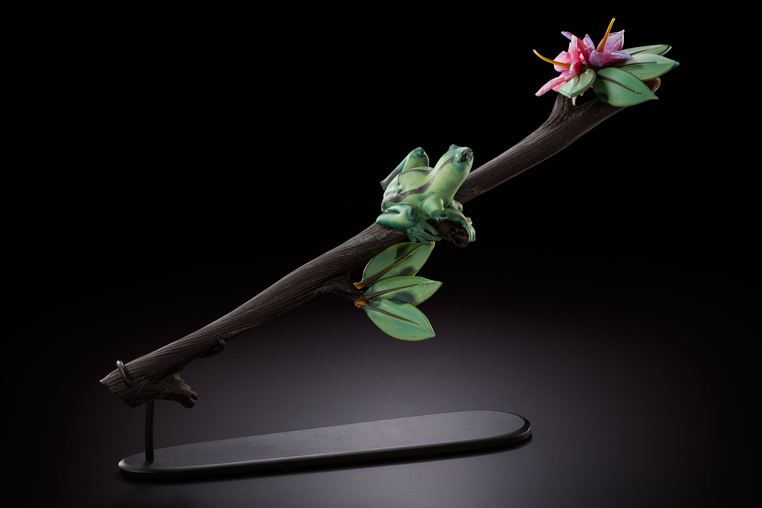 Raven SkyriverAnticipate (Western Chorus Frog)Off-Hand Sculpted Glass, Metal Stand
Raven SkyriverAnticipate (Western Chorus Frog)Off-Hand Sculpted Glass, Metal Stand- 16.75"h
- 26"w
- 6"d
SOLD -
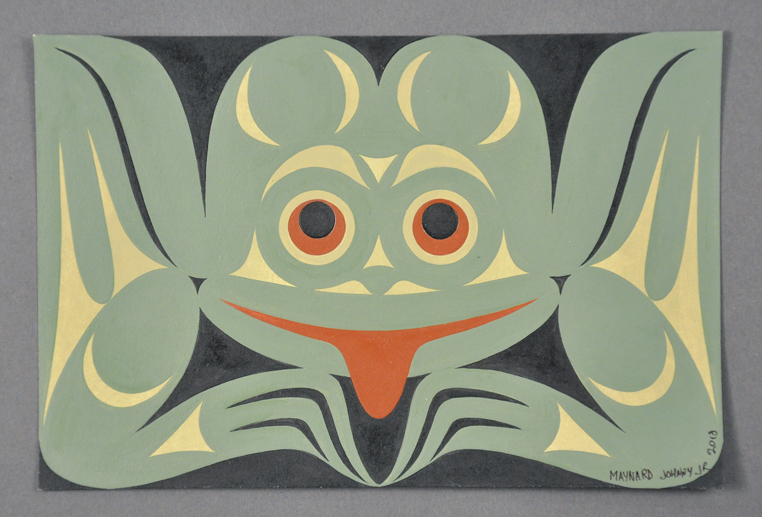 Maynard Johnny, Jr.Happy FrogOriginal Acrylic on Paper, Conservation Framed
Maynard Johnny, Jr.Happy FrogOriginal Acrylic on Paper, Conservation Framed- 6"h
- 9"w
SOLD -
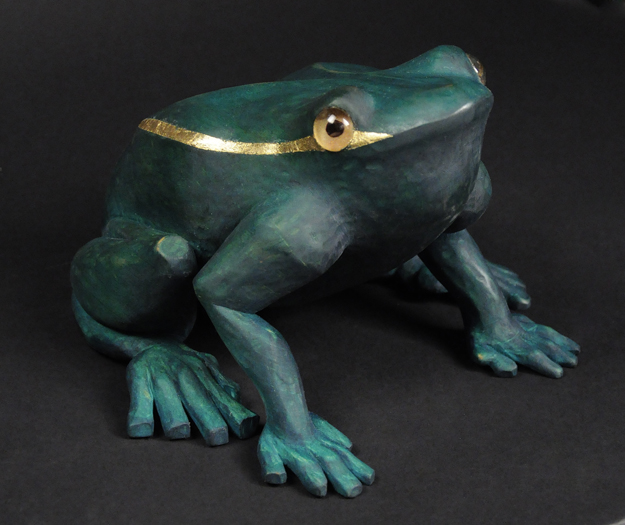 Raven SkyriverPrimavera (Frog)Alder, Acrylic, Gold Leaf, Glass
Raven SkyriverPrimavera (Frog)Alder, Acrylic, Gold Leaf, Glass- 5.5"h
- 8.5"w
- 11.5"d
SOLD -
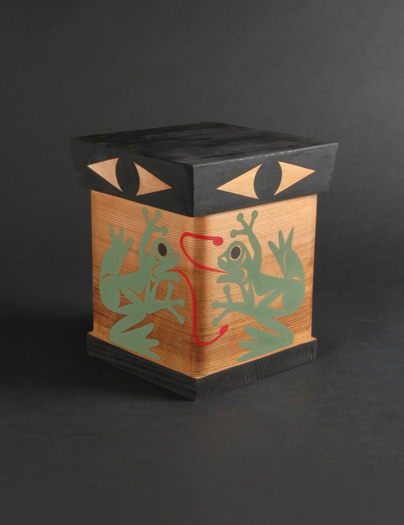 Maynard Johnny, Jr.Leaping Frog BoxRed Cedar, Acrylic
Maynard Johnny, Jr.Leaping Frog BoxRed Cedar, Acrylic- 9.38"h
- 7.75"w
- 7.75"d
SOLD -
 Raven SkyriverRana (Frog)Off Hand Sculpted Glass
Raven SkyriverRana (Frog)Off Hand Sculpted Glass- 6"h
- 7.25"w
- 9"d
SOLD -
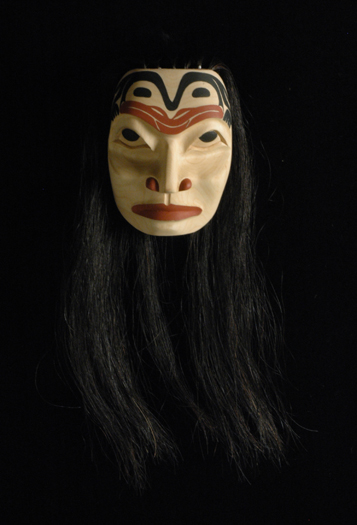 John WilsonFrog Prince MasketteAlder, Acrylic, Horse Hair
John WilsonFrog Prince MasketteAlder, Acrylic, Horse Hair- 6"h
SOLD -
 Barry HeremFrog PrinceOpen Edition Corten Steel, Powder Coating
Barry HeremFrog PrinceOpen Edition Corten Steel, Powder Coating- 9"h
- 18"w
SOLD -
 Barry HeremFrog PrinceOpen Edition Corten Steel
Barry HeremFrog PrinceOpen Edition Corten Steel- 23.25"h
- 48"w
Contact Us to Special Order -
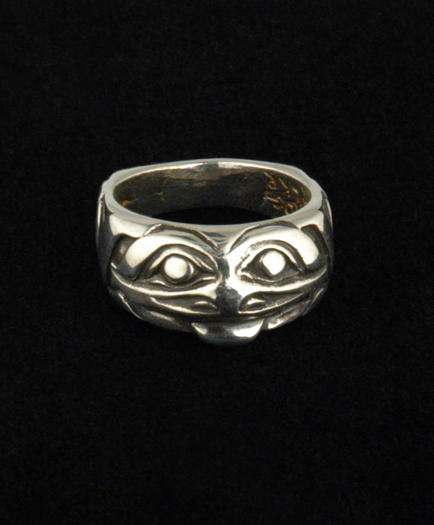 Owen and Janet WalkerFrog RingSterling SilverContact Us to Special Order
Owen and Janet WalkerFrog RingSterling SilverContact Us to Special Order -
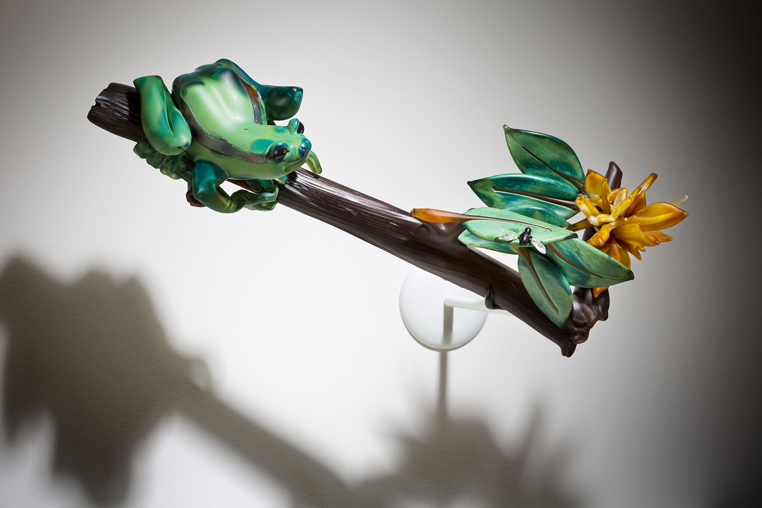 Raven SkyriverPrey (Frog)Hot-Sculpted Glass, Metal BracketSOLD
Raven SkyriverPrey (Frog)Hot-Sculpted Glass, Metal BracketSOLD -
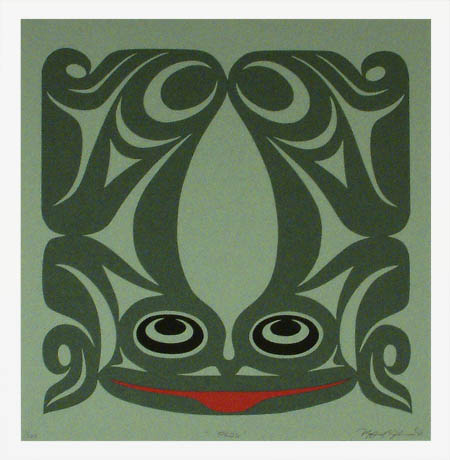 Maynard Johnny, Jr.FrogLimited Edition Serigraph
Maynard Johnny, Jr.FrogLimited Edition Serigraph- 15.5"h
- 15"w
$175 - Contact Us to Special Order -
SPoint15_0.5_x_18.jpg) Susan PointTadpolesLimited Edition Serigraph
Susan PointTadpolesLimited Edition Serigraph- 15.5"h
- 18.5"w
Contact to Special Order -
SPoint15_0.5_x_18.jpg) Susan PointTadpolesLimited Edition Serigraph
Susan PointTadpolesLimited Edition Serigraph- 15.5"h
- 18.5"w
Contact to Special Order -
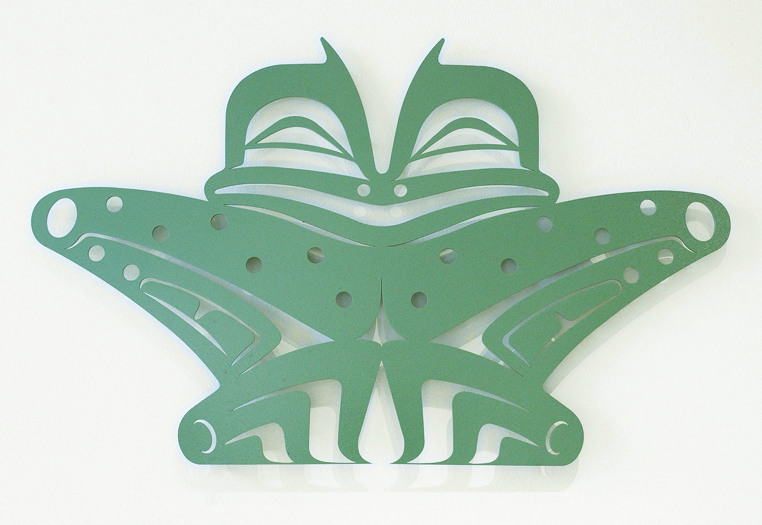 Barry HeremGreen Garden FrogOpen Edition Corten Steel, Green Powder Coated
Barry HeremGreen Garden FrogOpen Edition Corten Steel, Green Powder Coated- 22.13"h
- 36"w
- .19"d
Contact Us to Special Order -
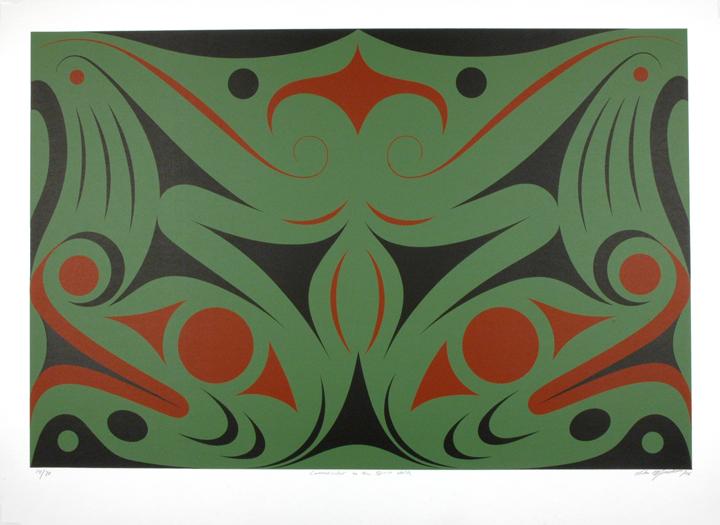 Luke MarstonCommunicator to the Spirit WorldSerigraph
Luke MarstonCommunicator to the Spirit WorldSerigraph- 22"h
- 30"w
SOLD -
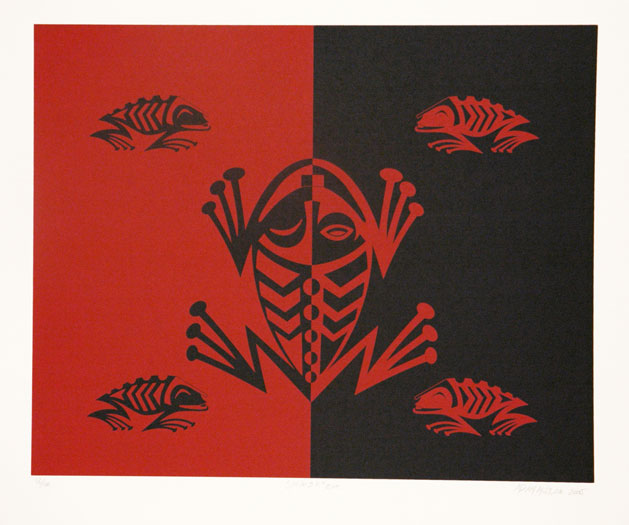 Frog: Red/BlackSerigraph
Frog: Red/BlackSerigraph- 14.75"h
- 18"w
$150 -
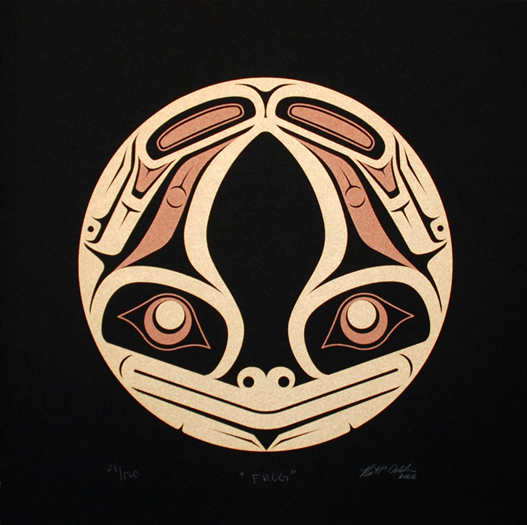 Nathaniel P. WilkersonFrog (Gold and Copper)Serigraph
Nathaniel P. WilkersonFrog (Gold and Copper)Serigraph- 15"h
- 15"w
SOLD -
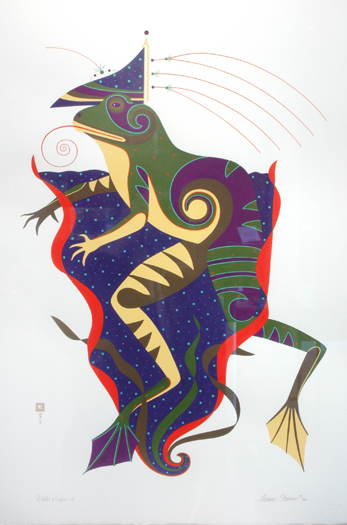 Thomas StreamWater PeeperLimited Edition Original Gouache Painting
Thomas StreamWater PeeperLimited Edition Original Gouache Painting- 22"h
- 15"w
SOLD
